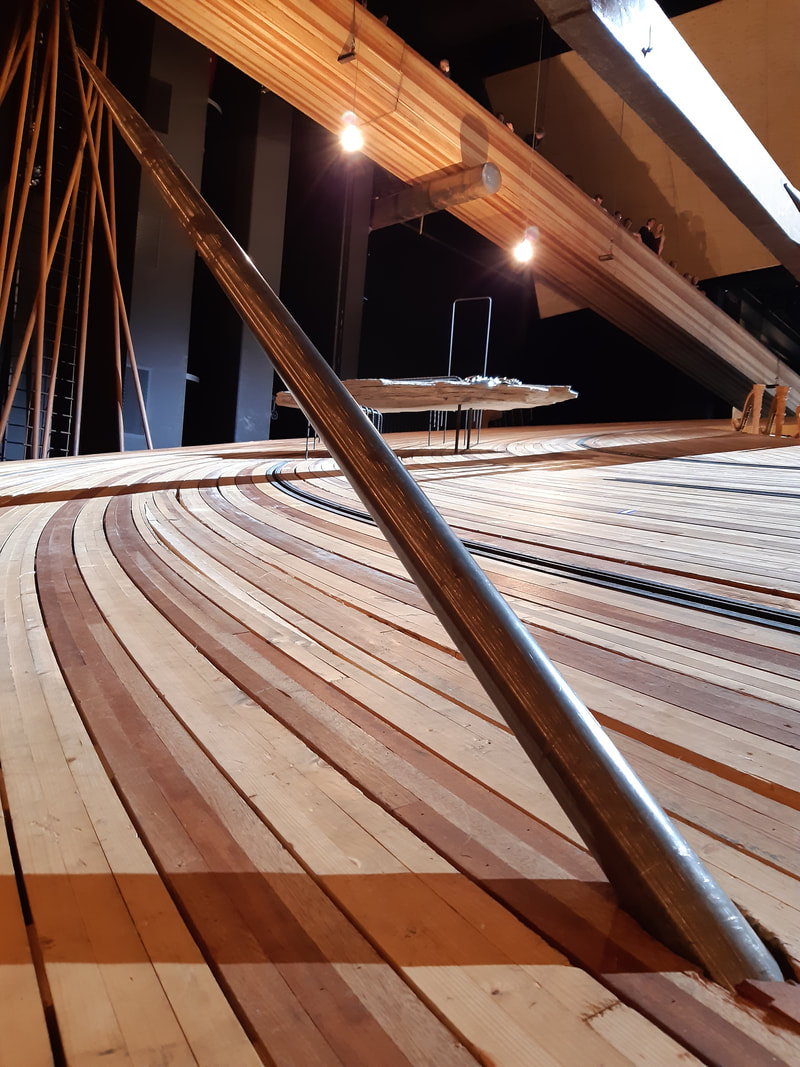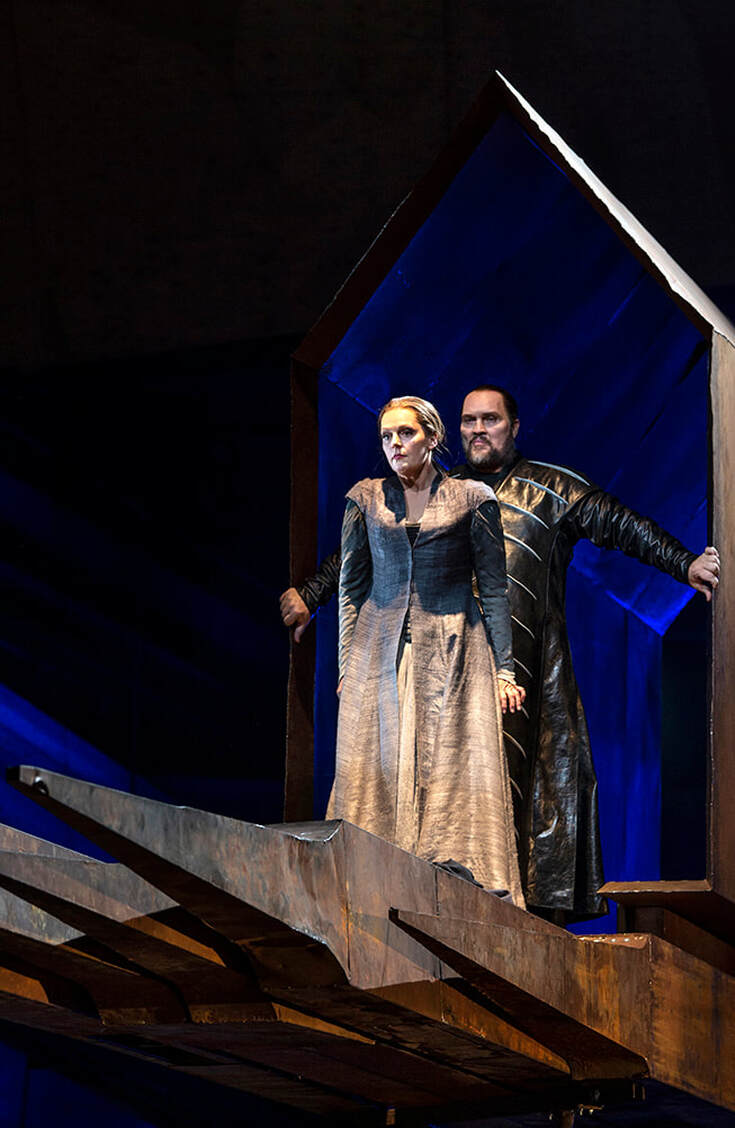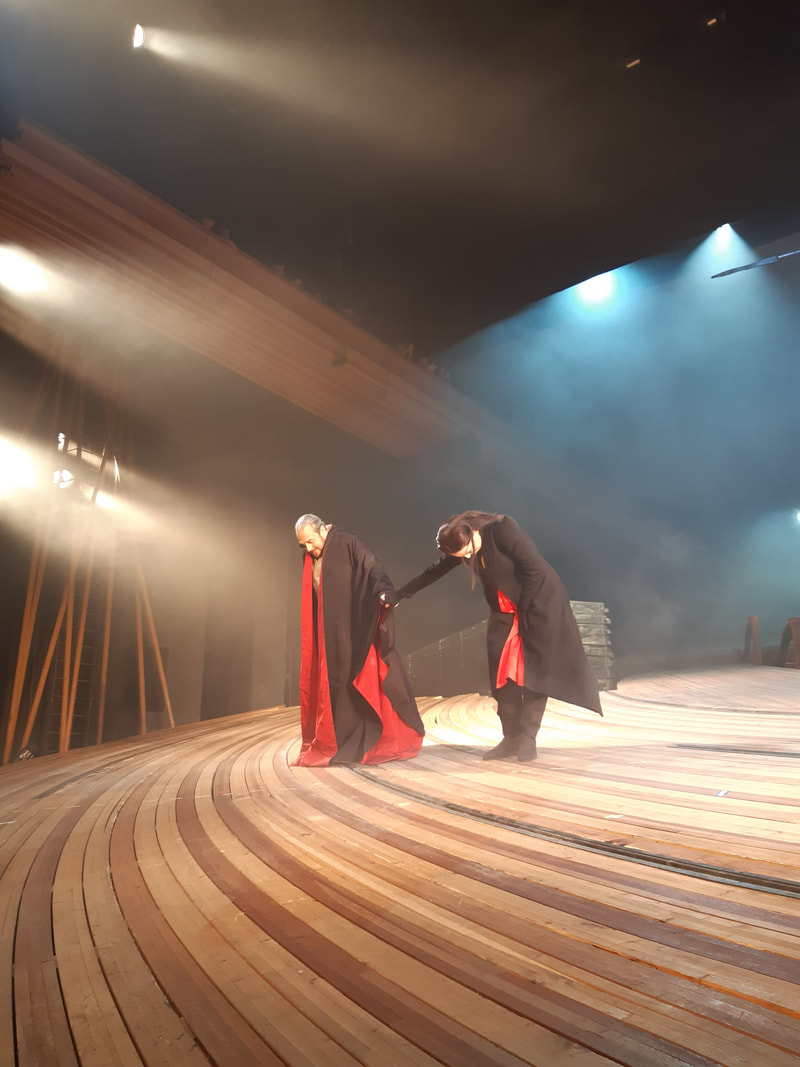One more time he returns to the Dutch National Opera: Pierre Audi's take on Die Walküre. The production that made me (almost 20 years ago) a lover of opera and a Wagner aficionado in particular. One last time he takes a ride on the stage of the Muziektheater in Amsterdam. Pierre Audi's production of Die Walküre, part of a complete Ring-cycle in which Audi, now more than 20 years ago, wrote theatre history and contributed significantly to the name and fame of the Dutch National Opera. A legendary production, endowed with DVD and CD releases, that turned out to be not only my door to the world of opera but also proved to be my gateway to classical music. It was this opera, this very same production, in which I found something that I had lost but of which I could not suspect that what had been lost could be found in an incestuous love affair and a chief god who, eventually, shows himself human, all too human. An opera in a production of Pierre Audi with suggestive, atmospheric set designs by George Tsypin. An opera in a staging that ripened the mind for a world behind the dead-end street that pop music had become with music that was surprisingly well suited to ears that had grown up with blues-based pop & rock. From hard rock to Richard Wagner. Both music with balls like Iain Paterson once put it when he was asked about his love for both heavy guitars and the music of the sorcerer of Bayreuth. In the rerun of this Audi-Walküre, Paterson sings Wotan. Die Walküre is three operas for the price of one. Three acts of which each act is a drama in its own right. A red hot love story in the first act. Wotan, who in the second act finds out that the rules with which he rules the world apply also for himself - a crucial moment in the Ring - and the third act, furiously starting with one of the best-known tunes in music history, the Walkürenritt, which ultimately leads to one of the most beautiful conclusions in all of opera; Wotan's farewell, when the chief god has to face the ultimate consequence of his choice for power over love and bids farewell to his beloved daughter Brünnhilde. With music that is firmly anchored in soundtracks and movies (Apocalypse Now and Bugs Bunny) is Die Walküre a piece of genre-transgressing theater. Just as you don't have to love pop music to like The Beatles and don't have to be a jazz cat to appreciate Miles Davis' Kind of Blue & Birth of the Cool-period from the 1950s, you don't have to be acquainted with opera to have a (very) satisfying night in the theater with Die Walküre. But on 8 December it really will be over - at least as far as this production is concerned. Then the Walküren will take their last ride on the 56-metre-long " landing strip " (a cross section of the world ash) that George Tsypin had conceived as a stage for the drama of the second opera in the Ring cycle. That stage is gigantic, the first three rows of seats in the auditorium have to make way for it. It's a landscape separated from time and place, that, also with this fourth rerun of Die Walküre (this time as stand-alone opera), has lost none of its ability to inspire awe. Here, music drama becomes space. A space with a central role for the orchestra, situated in the middle of the stage. It is a kind of reversed Bayreuth construction (where the orchestra is under the stage), but it works. As in Bayreuth, the sound of the instruments and the singers come together on stage before they are taken into the auditorium. With respect to the previous editions of this Audi-Walküre, all roles, from conductor to cast, have changed. In a production that has more than proved its worth in the past, this invites comparison. Compared to Hartmut Haenchen, Marc Albrecht, for example, conducts broader tempi. This demands something extra of the singers stamina. It seemed to give Iain Paterson - by moments - some trouble. The baritone of this Wotan suffered - especially in the third act - from a somewhat nausal vocal delivery. Paterson turned out not to be one hundred percent fit, a shortcoming that will be remedied with a few days of rest. Wotan's extramarital daughters, the Walküre sisters (fruits of fornication between the chief god and the goddess of the earth, Erda, at the end of Das Rheingold), formed in their interpretation and equipment with militant silver wings a combo in which the whole was greater than the sum of its parts. Compared to the Hunding from the previous edition, Kurd Rydl, the Hunding by Stephen Milling is a giant. Milling's stage presentation, together with his deep bass, was, as always, impressive. The very filmish design of Hunding's armour by Eiko Ishioka (she also designed the costumes for Francis Ford Coppola's Dracula) made him look as if he'd walked out of an Akira Kurosawa movie. Opposite this Hunding were the Walsungen twins. The Siegmund of Michael König, a bright, lucid tenor with the aura of a kind-hearted man, and the Sieglinde of Eva-Maria Westbroek; a role that by now fits her like a glove. It was the first time Westbroek sang the role in the Netherlands in a staged production. Her performance was one in which the contradictions that many good interpretations seemingly effortlessly unite - fear and courage, vulnerability and strength - merged into a beautiful and layered representation of the woman that recognized in Siegmund her supposedly lost brother and great love. With the imposing and threatening Hunding by Milling, you feared even more for the fate of this Walsungen couple than you usually do. The cast was good, Westbroek was very good. It is all very justified praise for a production that for yours truly was a return to the year zero of his Wagner fascination. The end of an era as well. Pierre Audi is saying goodbye to Dutch National Opera and we will see what the future (for Wagner and beyond) will bring to the opera stage in the Dutch capital. You come out differently than you enter. An evening with Wagner. That goes for both spectator and artist. They were visibly emotionally moved by it, Iain Paterson and Martina Serafin when they received the final applause after Wotans Abschied. It was the end of a performance that will continue to set the Muziektheater in Amsterdam on fire in the weeks to come. Dutch National Opera 16 November 2019 (premiere): Dates: 16 November until 8 December 2019 Conductor: Marc Albrecht Netherlands Philharmonisch Orchestra Stage direction: Pierre Audi Decor: George Tsypin Costumes: Eiko Ishioka, Robby Duiveman Siegmund: Michael König Hunding: Stephen Milling Wotan: Iain Paterson Sieglinde: Eva-Maria Westbroek Brünnhilde: Martina Serafin Fricka: Okka von der Damerau Gerhilde: Dorothea Herbert Ortlinde: An de Ridder Waltraute: Kai Rüütel Schwerleite: Julia Faylenbogen Helmwige: Christiane Kohl Siegrune: Bettina Ranch Grimgerde: Eva Kroon Rossweisse: Iris van Wijnen - Wouter de Moor
0 Comments
Leave a Reply. |
TIMELINE
July 2024
|








 RSS Feed
RSS Feed